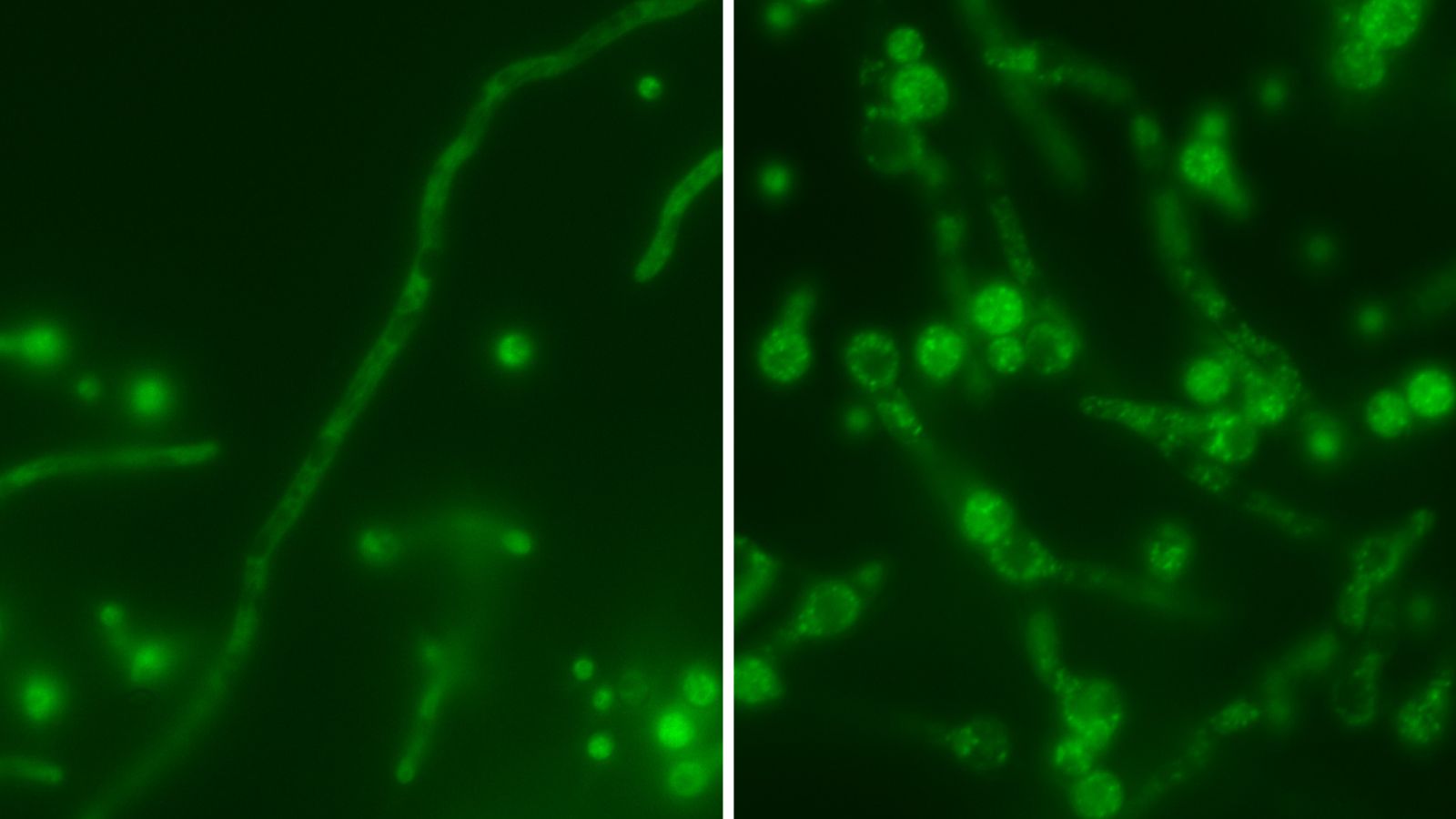🍄 Counterintuitive? Curing this fungus of its viruses makes it much less dangerous
Follow us on Google News (click on ☆)
The World Health Organization has classified the fungus Aspergillus fumigatus as a major concern due to its ability to cause serious infections. This microorganism, present in the environment, releases spores that people inhale daily without consequences for most. However, in immunocompromised individuals or those with lung diseases, it can trigger potentially life-threatening conditions, with millions of cases reported worldwide each year.

Aspergillus fumigatus infected by a virus (right) shows better survival compared to non-infected strains (left). Credit: Marina Campos Rocha
Researchers have identified a specific virus, named AfuPmV-1M, that infects this fungus. Contrary to what one might think, this virus does not harm its host; on the contrary, it provides it with significant advantages for surviving in hostile conditions, including... the human body. It notably enhances melanin production, a pigment that strengthens the fungus's resistance, and optimizes its response to environmental stress.
In a study published in Nature Microbiology, experiments on mice showed that administering antiviral drugs targeting this virus reduced the host fungus load in the lungs and increased the animals' survival rate. This approach, which indirectly targets the fungus through its virus, represents an innovative strategy to combat fungal infections, without worsening the situation as some previous studies had feared.
The implications are vast: if these antivirals prove effective in humans, they could be used to weaken the fungus, allowing the immune system or conventional antifungals to eliminate it. Moreover, other fungal pathogens could harbor similar viruses, which opens the way for new research to understand these interactions at the molecular level.
Fungal viruses and their hosts
Viruses that infect fungi, called mycoviruses, are fascinating biological entities that evolve in close association with their hosts. Unlike viruses that attack animals or plants, they are often specific to a particular fungal species, such as Aspergillus fumigatus for the AfuPmV-1M virus.
These viruses can alter the fungus's metabolism by influencing protein synthesis and RNA regulation, a molecule essential for producing cellular components. This results in better adaptation to stresses, such as temperature variations or the presence of toxic substances.
In some cases, this relationship can be beneficial for the fungus, giving it increased virulence or resistance to antifungals. Understanding these mechanisms allows for the development of innovative therapies that target not the pathogen itself, but the elements that make it more dangerous.
Ongoing research aims to explore whether other human pathogenic fungi, such as Candida or Cryptococcus, harbor similar viruses, which could revolutionize the fight against fungal infections.